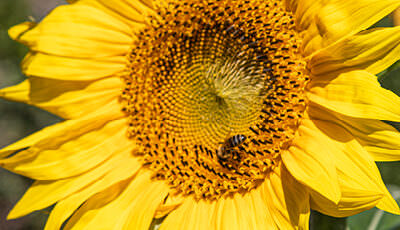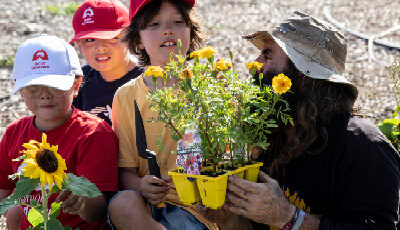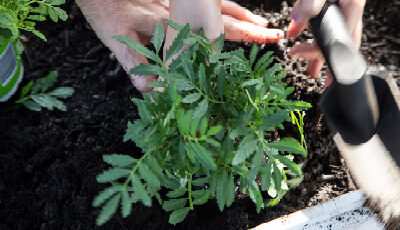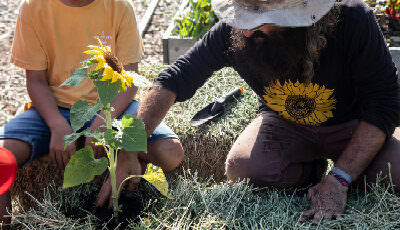
Creating a beneficial garden: planting
Time Allocation: 30 -40 minutes*
Activity Level: Moderate
Introduction
Planting flowering plants next to a food crop is known as beneficial planting. The flowering plants (beneficial plants) attract pollinators and predators, which help increase your food crop and protect plants from pests. In this activity, children will be applying the information discovered in the assessment and investigation learning activities already undertaken in this sequence. This activity provides opportunities to apply learning, test hypotheses and monitor progress.
*Time allocation will be dependent on site selection and travel time.
Checklist
Instructions
 STEP 1
STEP 1
Review the garden insects
As a group discuss invertebrates, specifically insects and how we view their presence in the garden.
Ask the children to suggest some insects that could be listed under the following three headings:
- Pests
- Pollinators
- Predators
(Refer back to the investigation learning activity if you need help with the different types of insects and how they impact the garden).
Beneficial insects include:
 STEP 2
STEP 2
Make connections between the crop and the beneficial plants
Show the children the punnets of crop seedlings and the punnets of flowering plants.
As a group, ask the children to make connections between the food crop and the flowers that have been selected.
Ask the children to make a hypothesis (a smart guess) about how the insects found in the assessment and investigation learning activities might be attracted by these flowering plants.
 STEP 3
STEP 3
Planning the planting
Creating a beneficial garden can be a bit of an experiment. Use the activity sheet to map the garden and the beneficial links that you plan on creating.
Use the labels on the seedling punnets to decide on how to space your beneficial plants around your crop.
Beneficial plants are often planted in clumps around the outside of the garden bed. This helps with wise use of garden bed space and it helps the beneficial insects to see them.
It is best to plant your beneficial plants at the same time as your food crops.
When planting seedlings, space them in their pots out on top of the soil, check the label, and see that you have spaced them correctly with a ruler.
 STEP 4
STEP 4
Plant, care and monitor
Use a trowel to dig a hole just big enough so the plant’s root section can be inserted. Tap the pot gently and squeeze the plant out without damaging the roots, place it in the hole and fill it with soil.
Create a saucer shaped depression in the soil to act as a dam, and then water in the plants gently. Mulch around them to help reduce water loss and suppress weeds.
Check your beneficial plantings over time and make sure they are growing well. Can you find insects to see if the beneficial planting is attracting insects to help your crop? What other biodiversity improvements do you notice?
Complete the activity sheet and the links that you hoped would occur between the beneficial plants and the food crops.
Take notes about the different types of insect you find:
- are they pest species or are they beneficial?
- are there changes or improvements that you could make to the plantings?
Extension Activity
Design an experiment to assess whether beneficial planting is effective. What could you change or remove to test whether you’re on the right track?
Design a poster to promote beneficial planting. Focus on three key messages that you would like your audience to know.